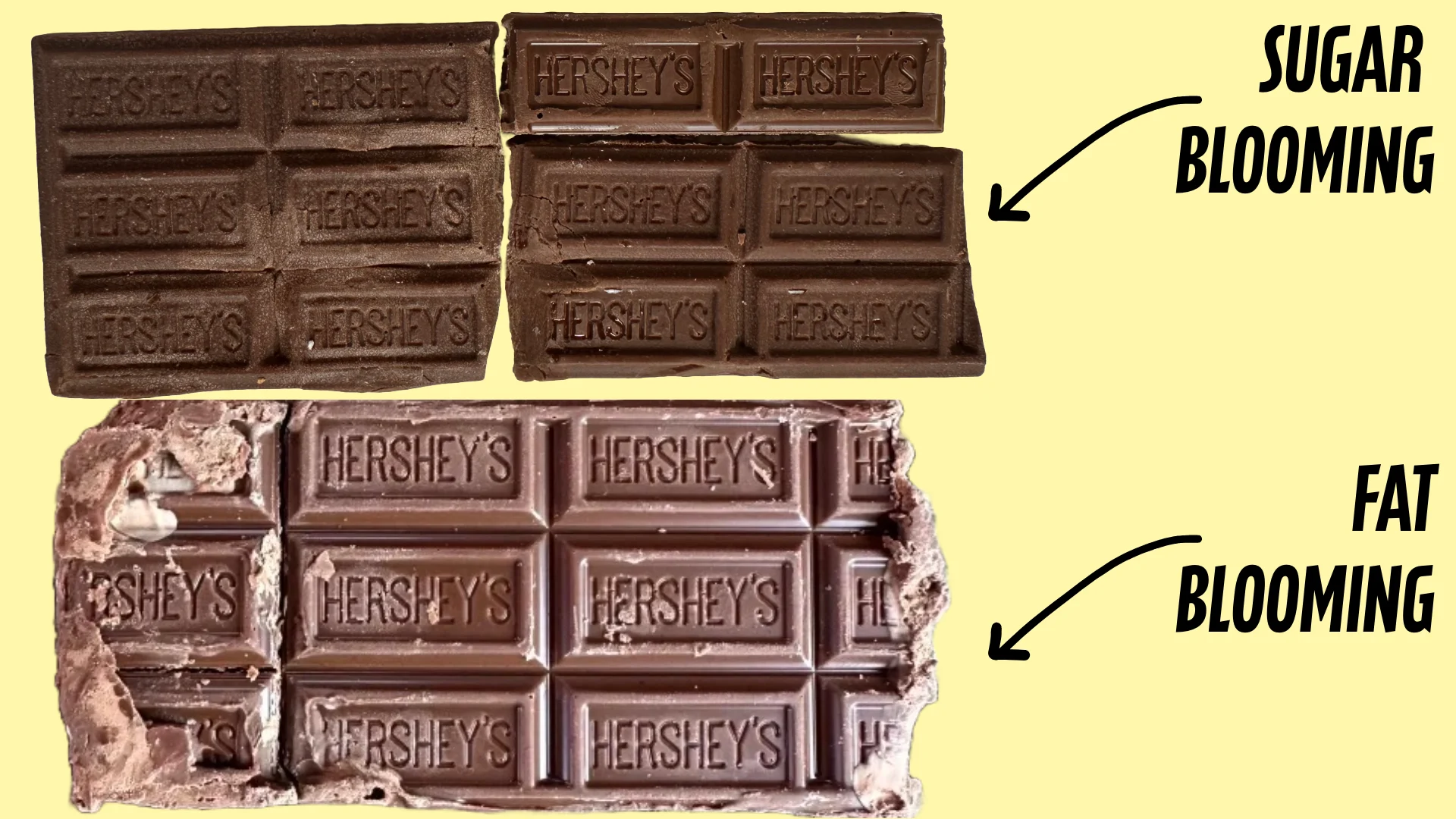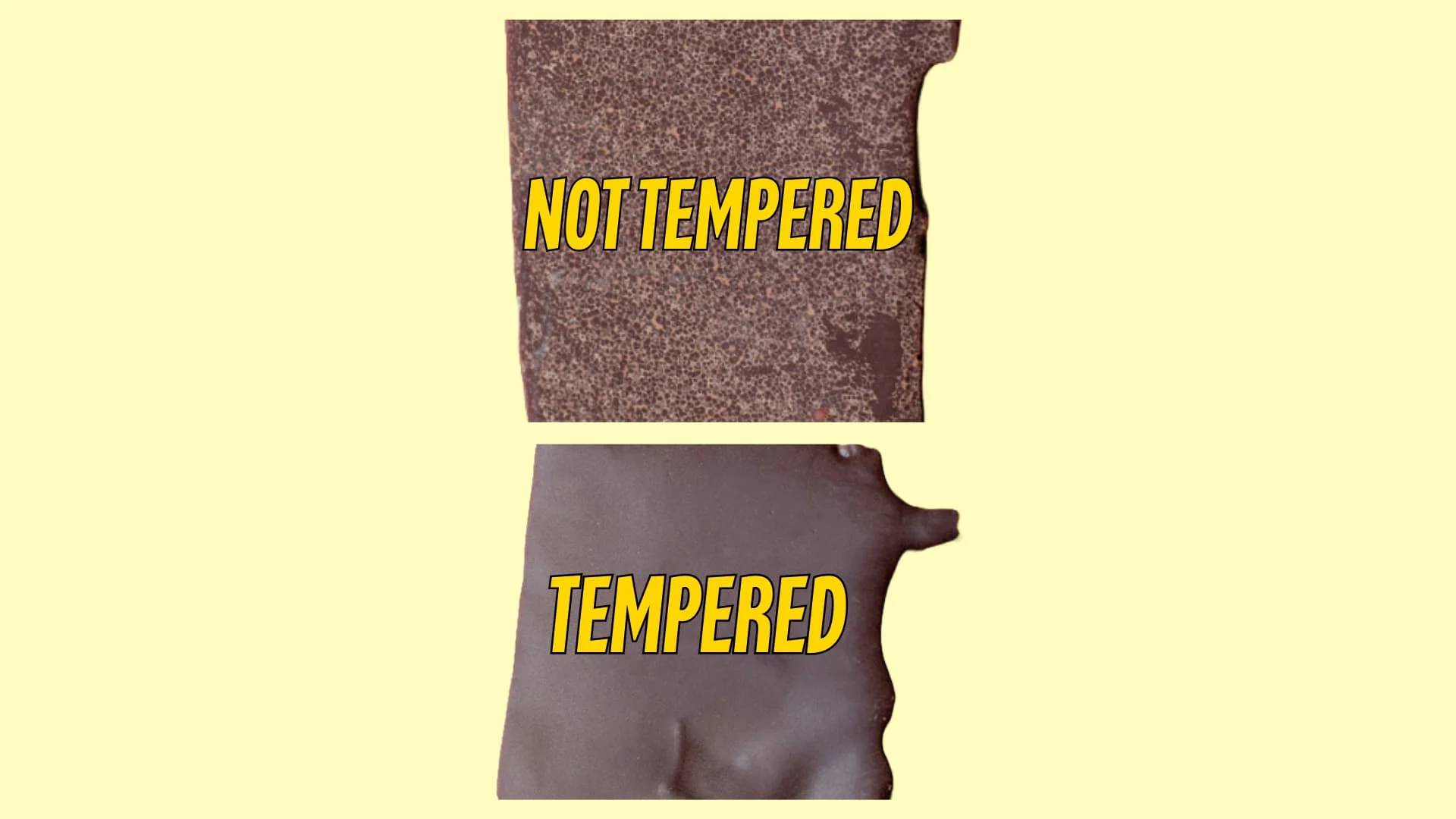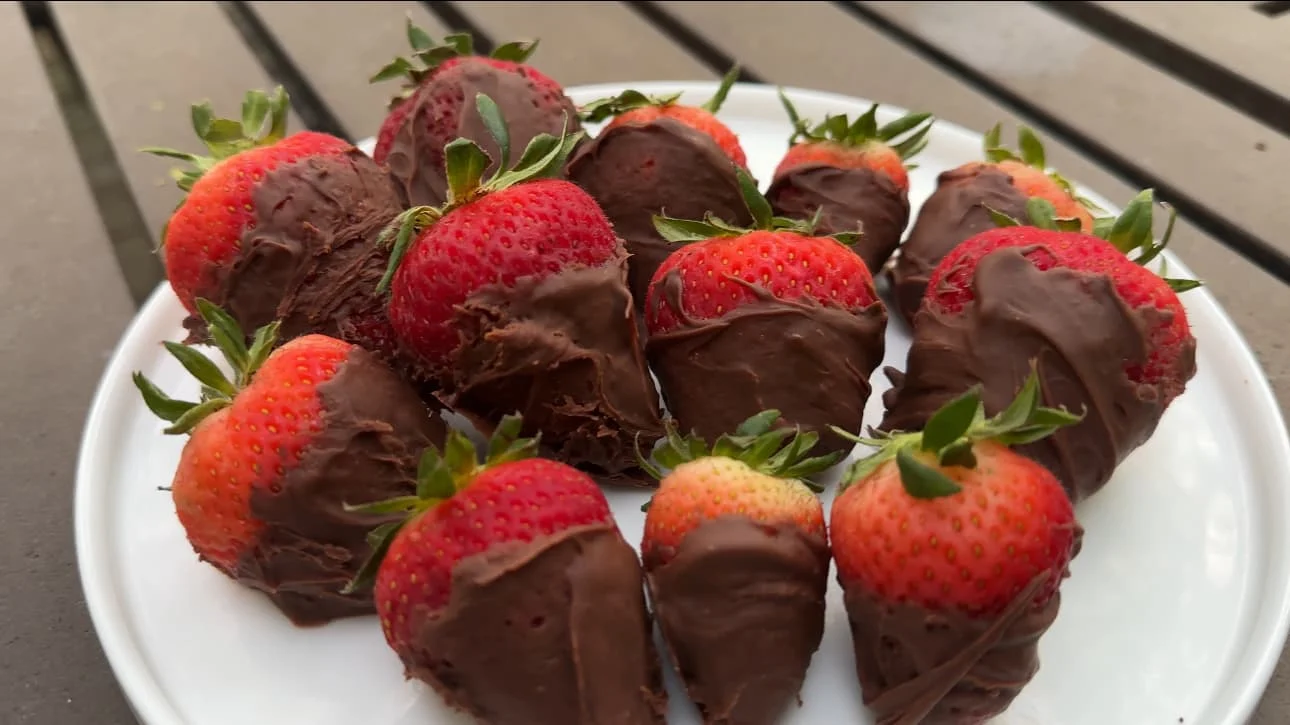Explore the science behind why chocolate turns white or gray and whether it’s still safe to eat. From fat blooming to sugar blooming, discover the two main reasons behind this phenomenon and learn the proper storage and tempering techniques that can prevent chocolate blooming.
Understanding Chocolate Blooming
Chocolate blooming, often mistaken for mold, occurs due to two main factors: fat blooming and sugar blooming. Fat blooming arises when cocoa butter separates from the chocolate mixture and migrates to the surface, triggered by higher storage temperatures.
Conversely, sugar blooming occurs at lower temperatures, causing sugar to crystallize on the surface, often exacerbated by moisture. This phenomenon is particularly prevalent in damp environments, where moisture interacts with the chocolate, facilitating sugar crystallization and the formation of the white coating.

The Tempering Technique
Tempering is the secret to achieving that glossy sheen, smooth texture, and satisfying snap in chocolate. It’s a delicate dance of temperature control, combining both artistry and scientific precision. By encouraging the formation of stable cocoa butter crystals, particularly the coveted Form V crystals, tempering transforms chocolate into a culinary masterpiece. Understanding the polymorphic forms of cocoa butter is crucial, with Form V crystals being the pinnacle of chocolate perfection.

The Polymorphic Forms of Cocoa Butter
Form I (α-phase): This polymorphic form of cocoa butter is highly unstable, characterized by the presence of small, irregular crystals. Chocolate in this form typically exhibits a soft, greasy texture and has a poor shelf life due to its susceptibility to rapid degradation.
Form II (β’-phase): With a slightly higher melting point than Form I, this phase tends to yield a chocolate product with a grainy texture. While not as unstable as Form I, chocolate in this form may lack the smoothness and consistency desired in high-quality confections.
Form III (β-phase): This phase produces chocolate with a smoother texture compared to Form II. However, it is still prone to issues such as fat bloom over time, wherein cocoa butter migrates to the surface, resulting in undesirable white spots or streaks.
Form IV (β-phase): Chocolate in this form contributes to the desirable snap and shine characteristic of well-tempered chocolate. However, without proper control, it can still be susceptible to fat bloom, detracting from its overall appearance and texture.
Form V (β’-phase): Considered the pinnacle of chocolate-making, Form V crystals are highly desirable for their ability to impart a smooth texture, glossy appearance, and satisfying snap to chocolate. Achieving and maintaining Form V crystals is the primary goal of the tempering process, ensuring the production of high-quality confections.
Form VI (β-phase): While the most stable form of cocoa butter, Form VI is typically not desired in chocolate-making due to its tendency to result in a gritty texture and poor mouthfeel. Chocolate in this form may lack the smoothness and overall sensory experience characteristic of premium chocolate products.
Remedies for Blooming
Fortunately, there are remedies for bloomed chocolate. One simple solution is reheating the chocolate gently and repurposing it for delectable treats like brownies or chocolate-covered strawberries. Heating the chocolate to no more than 115°F is ideal, melting away the blooming and revitalizing its texture.
Practical Tips and Tricks
When heating chocolate, precision is paramount. Aim to keep temperatures around 105°F-115°F to avoid overheating and compromising the chocolate’s quality. You can also add stable (form V chocolate). The idea of adding stable chocolate to the bloomed chocolate is that there are intact beta crystals present, which act as seed crystals to encourage the formation of more beta crystals.
I used a double boiler to heat it up. You can also use a microwave if you don’t have a double boiler. Stir occasionally until it reaches temperature. Once heated it’s ready to use in all sorts of desserts.
So, the next time you encounter bloomed chocolate, don’t throw it away! Instead, just repurpose it for something more delicious like these chocolate covered strawberries I made with my bloomed chocolate!

If you are interested in more Food Science content I suggest you check out my food science section!

